I wrote this article in Japanese and translated it into English using ChatGPT. I also used ChatGPT to create the English article title. I did my best to correct any translation mistakes, but please let me know if you find any errors. By the way, I did not use ChatGPT when writing the Japanese article. The entire article was written from scratch by me, Saikawa Goto.
Introduction
Movies and books covered in this article

Three takeaways from this article
- Experience the “shocking experiment” created by the authors on Youtube.
- A textbook for living that should be distributed to all human beings.
- Human perception and memory can easily cause mistakes and errors.
Self-introduction article


Published Kindle books(Free on Kindle Unlimited)
“The genius Einstein: An easy-to-understand book about interesting science advances that is not too simple based on his life and discoveries: Theory of Relativity, Cosmology and Quantum Theory”
“Why is “lack of imagination” called “communication skills”?: Japanese-specific”negative” communication”
The quotes in the article were translated using ChatGPT from Japanese books, and are not direct quotes from the foreign language original books, even if they exist.
“Habits of Failure that Humans Cannot Avoid” You Should Know to Avoid Fatal Mistakes
Experience the Experiment that Shocked the World of Psychology on Youtube
The two authors of this book conducted an experiment that later appeared in textbooks and shocked the world of psychology. In this book, the authors introduce psychological insights and provide various examples of the types of errors and mistakes that humans are prone to making.


First, let’s experience the experiment that the authors conducted and surprised the world of psychology using a video on Youtube.
When you click on the following Youtube link, a certain video will play. A description is also displayed in the video, but I will explain a little more here.
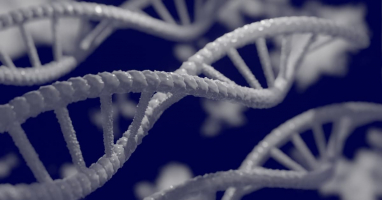
In the video, 6 women appear: 3 in white T-shirts and 3 in black T-shirts. They will pass two basketballs around, and you need to accurately count the number of passes made by the group wearing the white T-shirts. That’s all you have to do. So, let’s watch the following video.
I will not discuss the results here, but half of the subjects were “shocked” in the authors’ experiment and in a follow-up test conducted by another group. I, by the way, was also on the “shocked” side.
However, the other half of the participants reportedly did not experience any “shock,” so perhaps you might be one of those who didn’t. However, even if so, this doesn’t necessarily mean that you are more likely to avoid other “errors” or “mistakes.” So, I believe that it is important to fully understand what is pointed out in this book.

“The Textbook of Life” that All Humans Should Read
It may sound exaggerated, but I believe that this book should be distributed to people all over the world. Even a summary that visualizes its content would be good enough.
This book warns us in advance of the various errors that humans tend to make in everyday situations. If you were one of those who felt shocked in the previous video, you might understand its meaning even more strongly. Even if we think we are paying attention, we may miss things, and even if we think we remember something, we may not. Unfortunately, such flaws are inherently present in humans. Make sure to properly understand what is pointed out in this book.

The more you read this book, the more you would lose trust in your perception and memory. I also felt that the fact that “perception and memory cannot be trusted” should be a common understanding in society. That’s why I think this is a book that everyone living in society should read.
Later, I’ll introduce cases where something that one clearly remembers turns out to be wrong without exception. In other words, humans are creatures that “rewrite their memories as they please.” If this fact is not a common understanding, someone’s claim that “in my memory, it was like that” cannot be breaked doun.
Of course, we interact with others and society through our perceptions and memories. Furthermore it’s difficult to doubt what we feel and remember. However, what we believe is “correct” may actually be completely wrong.

If there is an opportunity to realize this in our daily lives, there’s a high chance that something big has already gone wrong. To prevent this from happening, I believe it’s important for us to be aware of the “tendency for humans to make unavoidable mistakes” beforehand and to have an attitude of paying attention to them, even if we can’t eliminate them completely.
In what follows, I will mention what examples will be presented, using the chapter titles of each section as headings.

Why did the Ehime Maru sink? -The Illusion of Attention
This chapter discusses the case of “being in sight but not ‘seen'”. The “Ehime Maru”, a Japanese fishing boat, ever collided with a U.S. Navy nuclear submarine and sank. However, the submarine’s captain testified that he “did not see” the “Ehime Maru”, which should have been clearly visible in his field of vision.

Another case is the prosecution of an American police officer for perjury. The officer was in pursuit of a suspect who was on the run, but at the same time, another officer was mistakenly identified as the suspect due to some misunderstanding, and was being beaten up by fellow officers. Although the prosecuted officer should have witnessed the scene, he testified that “he did not see it” and was charged with perjury.

As shown through various examples in this book, “being in one’s line of sight” and “being visible” are not always the same thing.
Other topics that are closer to our daily lives are also discussed.
Although I don’t drive, those who drive cars regularly would encounter a situation where “a motorcycle suddenly jumps out”. This is, of course, sometimes a case of the driver’s lack of confirmation. However, there are also cases where it is “in one’s line of sight but not visible.”

Why does it happen? It’s because “the shape of motorcycles don’t look like cars”. For drivers, “cars” are familiar, but “motorcycles” are not (At least in Japan, cars outnumber motorcycles by far). We humans do not overlook “what they can expect to be there,” but It seems that even if it is in their field of view, we overlook “what they expect to be less likely to be there.”
The same can be said for pedestrians and bicycles. It may be expected that accidents with pedestrians will increase as cycling is more common in urban areas. However, in fact, it seems that pedestrian and bicycle accidents are the least common in urban areas in the United States. It is believed that this is because pedestrians are accustomed to seeing bicycles and can quickly “recognize” bicycles that come into view.

But don’t you wonder? How has humanity been able to survive despite this “illusion of attention”?
In fact, it is said that this “illusion of attention” has only appeared recently. This means that modern society’s lifestyle has become so complex that it has reached the “limit of human attention.”
During the process of human evolution, humans did not live in environments as complex as today’s. They didn’t have to worry about submarines suddenly popping up from below while sailing or motorcycles suddenly appearing from the side while driving a car. Therefore, they didn’t have to strain their “attention” as much as we do today.

However, it is pointed out that “errors” have ended up appearing in modern society because the environment demands a level of attention power far beyond what humans have acquired in the course of evolution.
False Memories of Hillary’s Battlefield Experience
In this chapter, examples of how “human memory is ambiguous” are introduced. It turns out that Hillary Clinton’s repeated story of her “battlefield experience” was a blatant lie, but for her, it may have been a “correct memory.”

In this chapter, there’s an impressive story about a basketball coach.

One of the basketball players claimed that he was choked by the coach and described the situation in detail. However, other players who were present testified that there was no such fact as the coach choking him.

There was no conclusive evidence, and the two sides remained at odds. However, several years later, a video of the incident was discovered by chance and it was found that the player’s testimony about being choked was incorrect. However, even after this revelation, the player continued to claim that he was certain he had been choked by the coach, based on his memory of the event.
Of course, there is a possibility that this player is lying, but the chapter also presents other experiments that show how vague human memory can be.

For example, there is an experiment like this. A subject is led to a typical “laboratory” and asked to stay in the room for 30 seconds. Then, after moving to another room, they are suddenly asked, “What was in the laboratory?” The subject answers, “books” and “file cabinets” etc, but in reality, those things did not exist in the “laboratory.” How can this be explained?
It is because humans generally tend to “remember expected things.” That is, they “recall” what they expected to be there in laboratories. It means that memories can be rewritten by prejudice.
There is also a long-term experiment using “Flashbulb memory.” It refers to the fact that people remember the day when a very impressive event happened more vividly than other days. However, there is an experiment that shows even this “Flashbulb memory” can be tampered with.

After the 9/11 attacks in the US, people were asked where they were and what they were doing and their answers were recorded. And years later, the same people were asked the same questions and their answers were recorded again.
Surprisingly, many people’s answers differed from their previous ones. Even when shown their recorded answer from years ago, many people felt that their current memory was more accurate. For all intents and purposes, the answer would be more likely to be correct immediately after 9/11, but I was struck by the fact that they felt that their current memories, which have been overwritten, were more correct than their old memories.

In addition to the experiment, movies are also discussed. In movies, there are often scenes where the connection between before and after is strange due to simple mistakes. For example, in the movie “Pretty Woman,” it’s the famous mistake that Julia Roberts changes from holding a croissant to putting a pancake in her mouth.
However, humans don’t feel much discomfort when they watch such videos. This is called “change blindness.” People are more likely to not notice unexpected changes, and the belief that “There’s no way I can overlook it myself” actually promotes overlooks.

I have a story like this too. When I was a child, I remember breaking my foot bone three times and going to school with crutches. However, both of my parents said that “there is no such fact.” My parents say, “If you break your leg, we have to take you to school and pick you up, but I don’t remember doing that. So you didn’t break your leg.”
This discrepancy in memory still hasn’t been resolved, and it remains uncertain whether one of us (or both of us) is wrong. Will there ever be an opportunity to uncover the truth?

Testimonies of False Accusation are Created in This Way – The Illusion of Confidence
In this chapter, the relationship between confidence, ability, and trust is depicted.
First, consider this situation. This is apparently a real experience of one of the authors.
Suppose you go to the hospital and the doctor is looking at a textbook while diagnosing you. You will surely feel like this: Can I trust a doctor who diagnoses while looking at a textbook?

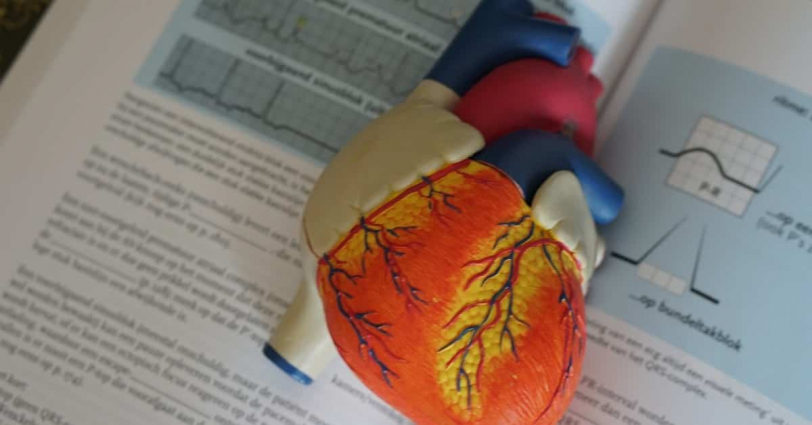
When imagining this situation, I might also feel uneasy like the author. On the other hand, if I encountered a doctor who confidently diagnoses, I would probably feel a sense of trust.
But of course, there is no relationship between confidence and ability. Moreover, psychologically speaking, there are multiple experimental results that say “those with lower ability become overly confident.”
Certainly, if you think about it, you can understand this.

The more knowledge and experience we have, the more we know the various cases and understand the enormity of things we need to do or deal with. It’s safe to say that the more knowledge and experience we have, the higher our ability will be, however, on the other hand, knowing the difficulty of the situation we face may make us lose confidence.
On the other hand, the less knowledge and experience they have, the more they don’t know either. And depending on their personality, there would be people who are the type to “have confidence without hesitation because they don’t know.” That’s why the situation arises where “those with lower ability become overly confident.”
If you think about it this far, the “doctor who is looking at a textbook while diagnosing you” from earlier should be considered trustworthy. However, intuitively, we find it hard to think so.

In addition, there are many experimental results that show that people who exude confidence are trusted. It’s a story that can certainly be imagined. As an example of this, this chapter discusses the “false accusation of rape” which is also the title of the chapter.
The victim woman tried to memorize the face of the perpetrator perfectly while she was being raped. Later, a suspect who was thought to be the rapist was identified, and the woman testified in court as a witness. She confidently testified that the defendant was the rapist who had assaulted her, and there was no other evidence, but the defendant was found guilty. However, it was later revealed that it was a false accusation after more than 10 years had passed.

The victim’s confident testimony was trusted by everyone, but it turned out to be a mistake. This shows that relying on “confidence” as a basis for ability or trust is dangerous.
Miscalculation of Investors that Led to Lehman’s Collapse: The Illusion of Knowledge
In this chapter, it is pointed out that humans tend to overestimate their own abilities.

At the beginning, an episode about human genome research is discussed. Humans were believed to have more genes because they are more intelligent than other organisms. The “Human Genome Project” was started to reveal all of the human genes, and at first, it was thought that humans had over 100,000 genes. However, it turned out to be less than 25,000, which is fewer than Poaceae plants’ genes and almost the same as sea urchin’s genes.
Regarding the investors, who are the title of this chapter, such experimental results are known. An experiment that simulated stock trading showed that “the less information given, the more profit.” Generally, it might be thought that the more information there is, the more accurate judgment can be made, but this belief seems to be mistaken.

Furthermore, the author points out that the investor’s belief that “they can make the right judgment because they have a lot of information” ultimately led to the Lehman’s collapse.
One factor that contributes to this type of “illusion of knowledge” not disappearing is the society’s praise of experts. The author says that experts are “people who think they have more knowledge than they actually do”, and because such people are needed, the “illusion of knowledge” continues to be reproduced indefinitely.

The trend of “easily” seeking expert opinions should be reconsidered.
The Fallacy of Myths, Demagogues, and Conspiracy Theories
In this chapter, it is depicted how humans are easily deceived by false rumors. In today’s society, where false rumors about the COVID-19 vaccine were circulating, this chapter is truly an important one that cannot be ignored.

At the beginning, the book discusses the “Measles epidemic in the United States.” To explain how this relates to “false rumors” requires a lengthy explanation, but basically, the reason is that many parents do not vaccinate their children against Measles due to false rumors. In the United States, it seems that there is a persistent false rumor that getting the Measles vaccine can cause autism.
People are deceived by false rumors because they misunderstand the difference between “correlation” and “causation.” Humans tend to interpret events that occur before or after as “cause and effect.” Although it is not an example in this book, I have read next story before.
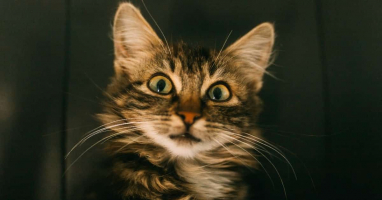

A certain organization conducted a campaign that said, “If you eat breakfast, your child’s grades will improve. So let’s have breakfast.” There is scientific data that says “Children who eat breakfast do well in school.” However, this campaign is incorrect. Do you know why?
Actually, this is how it is. Children who do well in school often study at home as well. And in households where home studying is done properly, breakfast is served as a matter of course (meaning the home environment is well maintained).

In other words, it’s not that “eating breakfast leads to better grades,” but rather, “in households where children have good grades, breakfast is properly served.” They’ve misunderstood causation.
The book gives an example: “On days with high ice cream sales, there are more drownings.” Anyone can see that there is no direct link between “ice cream” and “drownings.” Can you explain this?
The key point is “summer heat.” On hot days, “ice cream” sells well and more people go to the beach, which increases the number of “drownings.” It’s not that there is a relationship between “ice cream” and “drownings,” but rather, a relationship between “summer heat” and “ice cream/drownings.”

If you’re not careful, you might mistake cause and effect, or confuse causation with correlation. Even if our data and knowledge are correct, if we don’t know how to interpret them properly, we can be deceived by false rumors. So be careful, as you can never be too careful about this fact.
The Lie of Self-Enlightenment and Subliminal Effects: The Illusion of Possibility
In this chapter, a situation is described where “one ends up accepting the claim that ‘there is further potential in human abilities’.”

At the beginning, the myth that “listening to Mozart makes us smarter” is discussed. Humans want to believe that they still have potential and have a faint hope that this potential can be easily realized. That’s why the myth that “listening to Mozart will make us smarter,” which perfectly fits this condition, remains strong.
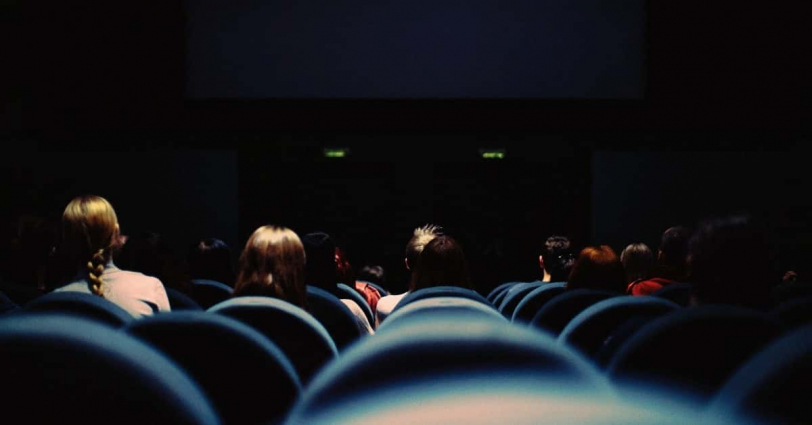
In addition, this book also covers the very famous psychological experiment called the “subliminal effect.” By inserting short cuts that humans cannot consciously perceive during movie screenings, it is possible to make them feel like drinking cola after watching the movie.
However, it has been revealed that this experiment is a fake. The person who conducted the experiment testified that he “made up the experiment because he was frustrated with his work not going well.”

However, because of a strong blind belief in “human potential,” the “subliminal effect” is still widely believed (I believed it too until I read this book).
It’s better to be skeptical of information that is convenient for us.

Conclusion
Up until now, I have introduced various examples, but finally, I would like to briefly touch on why such “illusions” exist in human beings.
The book is written as follows.
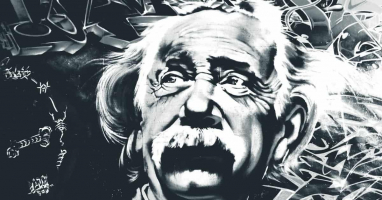
Illusions arise from the limits of our abilities, but these limits usually come with benefits as compensation.
Our brains, which govern instantaneous recognition, are adept at solving problems that were the basis of evolution, but our current culture, society, and technology are much more complex than in ancestral times. In many cases, intuition is insufficiently adapted to solve problems in modern society.

So, here is the thing.
It creates an “illusion” by not being able to do something, but that inability to do something can also be beneficial in another situation for humans. So the “illusion” as a side effect of “not being able to do something” that brings benefits has to be tolerated.
Also, throughout the course of evolution, humans have come up with various solutions to deal with immediate problems. These solutions work really well for processing the relevant problems, but if the same solution is applied in a different situation, it will manifest as an error. What was a “useful solution” for our ancestors becomes a “troublesome error” for us living in a complex modern society.

Human society has rapidly evolved, but our genetic makeup has not kept up with these changes. We must live with these errors as a result.
That’s why it’s important to know what kind of errors are likely to occur in any situation. By doing so, we can potentially avoid trouble and loss of life.
I think it’s not an exaggeration to say that this is a book that every human being should read.

Published Kindle books(Free on Kindle Unlimited)
“The genius Einstein: An easy-to-understand book about interesting science advances that is not too simple based on his life and discoveries: Theory of Relativity, Cosmology and Quantum Theory”
“Why is “lack of imagination” called “communication skills”?: Japanese-specific”negative” communication”







コメント